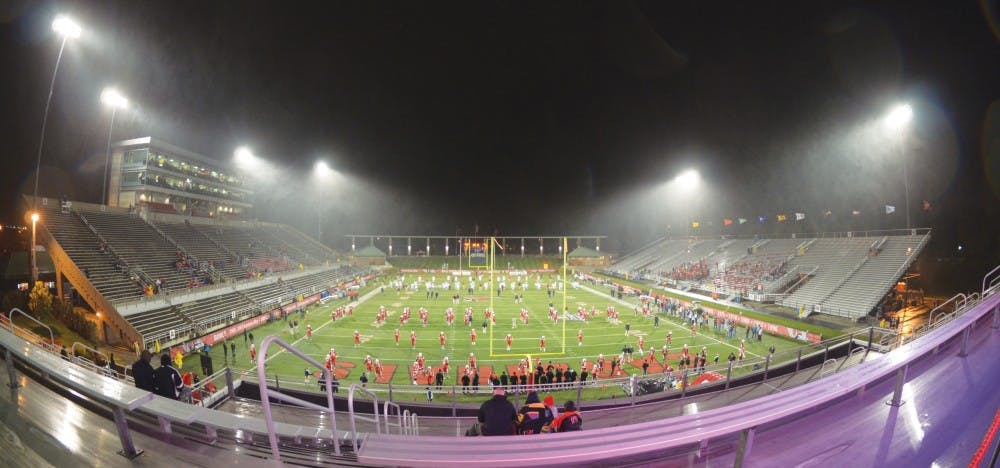Connor Granlund is a freshman music education major. His views do not necessarily reflect those of the newspaper. Write to Connor at @connorgranlund.
I have not attended an in-person sporting event since the Denver Nuggets vs. Indiana Pacers game in Indianapolis Jan. 2. Heading into college, I did not plan on attending many on-campus sporting events this fall.
However, I realized the importance of attending live events shortly after coming to Muncie. The lack of consistent opportunities for students to watch Ball State Football play in Scheumann Stadium due to COVID-19 restrictions has impacted our school spirit.
The experience of going to a live sporting event is unlike any other, and even with coronavirus restrictions, the experience can be just as special. Although the return of fans to stadiums will not be a normal one, it will still be worth following the guidelines necessary to bring back live attendance.
The pandemic has significantly impacted fan attendance at sporting events. Whether it is professional, college or high school athletic competitions, many teams have strictly limited or prohibited fans. However, as the world attempts to recover from the pandemic, this is something teams are continuously re-evaluating.
It is vital that teams in all levels — professional, collegiate and high school — resume in-person attendance in some capacity. Athletics are a source of pride and spirit for high school and college programs and a major source of entertainment for fans of professional leagues.
Major League Baseball resumed in-person attendance this past postseason after all 30 teams banned fans during the regular season. However, there were restrictions, including fewer tickets sold and physically-distant seating.
The MLB allowed 11,500 fans in Globe Life Field in Arlington, Texas, for this year’s World Series. The ballpark has a capacity of 40,300, which was enough for fans to remain distanced throughout games.
Based on stadium capacity and regional COVID-19 restrictions, 18 of 32 National Football League teams have allowed in-person attendance for games. The league has not yet announced whether it will allow fan attendance at this season’s Super Bowl, scheduled for Feb. 7, 2021, in Tampa, Florida.
On the college side of athletics, many football programs have allowed spectators, but this has varied based on each school’s location and desire to allow fans. Ball State Athletics recently announced it will allow 500 student fans inside Scheumann Stadium for its three home games in 2020. Attendees are required to wear masks and stay physically distant to help limit the spread of the coronavirus.
High school athletics in Indiana is very similar to college programs. Fan attendance has varied from each program and decisions made by each school’s administration. However, at most levels, schools have required mask-wearing and physical distancing.
This begs the question of what should happen next. In-person attendance has worked well for teams and programs that have tried it so far, but what about leagues such as the National Basketball Association, where teams have not held games in their home arenas since March?
Teams need to implement high levels of caution surrounding attendance. In areas with high coronavirus numbers, local authorities should revoke in-person attendance until the area has a low positivity rate to avoid the disease’s spread. Masks and physically-distant seating is a must, however, no matter how low regional numbers appear.
Playing is important, but it will not mean as much to fans unless they are able to attend games in person.
Contact Connor Granlund with comments at crgranlund@bsu.edu or on Twitter @connorgranlund.





